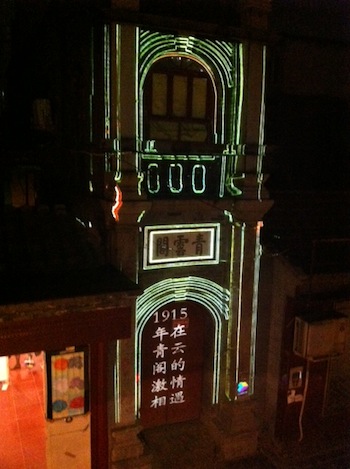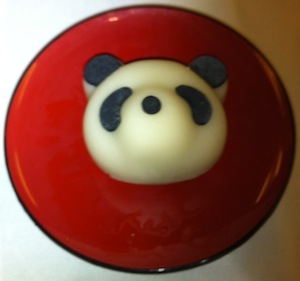|
|||||||||||
|
FEATURESChina's Unfinished Twentieth CenturyGeremie R. BarméNew Sinology avant la lettreMuch academic writing, and popular literature (be it in China or internationally about China) makes blithe claims about continuities and ruptures in that country's cultural, political and social behaviour. Since the creation of China Heritage Quarterly we have advocated a New Sinology that approaches these issues with an empathetic but rigorous scholarship. Our aim has been to produce work that is accessible to non-academic readers at the same time as continuing in a tradition of writing and thinking in and about the Chinese world that recognizes its valence in global cultural and intellectual endeavours. In his editorial essay below Christopher Rea, a Guest Editor of this issue and a scholar of Chinese literature and humour, offers his appreciation of what could be called a New Sinology avant la lettre. Chris says of The China Critic 中國評論週報, the focus of this issue China Heritage Quarterly, that in many respects the Republican weekly's aims were not incompatible with our more recent articulation of New Sinology, for The Critic's:
Reading The Critic Fig.1 A light installation by Gareth Repton of Luma Lu at the former Pavilion of Azure Clouds 青雲閣 on Yangmeizhu Alley 杨梅竹斜街, Qianmen, Beijing, created as part of the 2012 Beijing Design Week. The pavilion is famed as the meeting place of the anti-Yuan Shikai 袁世凱 general Cai E 蔡锷 and his lover Xiao Fengxian 小鳳仙 in 1915. (Photograph: Geremie R. Barmé) Scholars of Chinese literary, publishing and intellectual history have commented on the cosmopolitanism of the Chinese writers who edited and contributed to the English-language weekly The China Critic. In the virtual pages of this issue of China Heritage Quarterly, however, we attempt to recreate also some of the ambient sense of The China Critic and its era. Through scholastic analysis, a detailed Chronology, a large body of reproduced editorials and articles, essays and translations, we hope to share with our readers something of the sense of The Critic as a living, working, energetic, at times uncompromising, at times supine, robust and vacillating publication that reflected the tumultuous issues of its day. I would even argue that since so many of the problems that its writers confronted, contemplated and commented upon have reverberations into the twenty-first century, The China Critic continues to speak far beyond its circumstances to readers both of today and perhaps even of tomorrow. The other Guest Editor of this issue, William Sima, has helped recreate the experience of reading The China Critic only just short of reproducing the weekly in toto. In so doing our collective aim is:
People-smugglers of the IntellectChina Heritage Quarterly pursues scholarship in ways that look beyond the often-choking institutionalisation of ideas, letters and culture in contemporary academe. Elsewhere, when describing the Australian Centre on China in the World, the academic home of the Quarterly, I have spoken of our approach as being one that favours research work and writing that is 'unpinned by the humanities, engaged with the social sciences, public policy relevant and relevant to the public'. In pursuing such an approach we hope to affirm the value of liberal humanism. It is an approach—one riven with contradictions, dilemmas and as fraught with difficulties today as it was in the past—that was recently described with succinct clarity by Geordie Williamson when discussing the work of the novelist Shirely Hazzard:
In offering this revival of The China Critic we aspire to be 'people-smugglers of the intellect'. Academic research today too readily encourages (or demands) what elsewhere I have spoken of as 'fast reference' and data mining.[2] These are practices which are pursued all too often at the expense of patient reading and the considered understanding of people, events and ideas within their historical context and in the evolving environment of time. Any reprise by necessity collapses the timescape of the past into a concertina of effects. In an academic article, an essay or a translation, for a moment an era is revealed but then it collapses again in on itself as knowing general conclusions are draw from a welter of detail. So, rather than academically dissecting The Critic from some self-appointed Olympic vantage point and putting thereby its editors and authors in their place as historical artefacts, dusty remnants of a bygone age, we encourage readers to follow the essay introductions to and comments on a broad range of material from The Critic by writers past and present, the detailed Chronology of The China Critic and to read the original words of dozens of authors that we have reproduced. In our re-vivifying efforts we have been aided by the recent scholarship of colleagues who discuss the historical, linguistic, cultural and academic context of The Critic and its writers. We hope that our readers will be able thereby to enjoy the timbre of voices of the past and to contemplate anew the era of the editors and authors who created this unique Republican English-language journal of record. Another OpennessIn the Editorial of the September 2009 issue of China Heritage Quarterly, the focus of which was the 1930s T'ien Hsia Monthly, I commented on the unsettling legacies of China's Republican era openness, and the roots of much that is regarded as unique to China's People's Republic.  Fig.2 A reflected view of Qianmen and Zhengyangmen gates from Capital M in Beijing. (Photograph: Geremie R. Barmé, 2012) I remarked that, over the past decades scholarly work on Republican China (1912-1949) has brought into relief the many rich developments in a era that pre-dates by decades many things that are more readily associated with mainland China's post-1978 Open Door and Reform regime: positive engagement with international bodies, new institutions as well as institutional reform, improved governance and various nation building initiatives, economic performance and cultural efflorescence, among others. This work on the Republic is neatly digested in Frank Dikötter's The Age of Openness: China Before Mao (California University Press, 2008). Dikötter's corrective view of the Republican era is timely and important. To an extent the September 2009 issue of China Heritage Quarterly engaged with that undertaking and attempted, in a small way, to bring the conversation of the past into the context of the present. But, we should also note that certain salient features of post-socialist Chinese attitudes, behaviour and institutional practice that are less felicitous also have roots that reach at least as far back as the formative years of the Republic. The extremist rhetoric of revolution, for example, was a major feature of the early Republic. The ready resort to outrage, vituperation and denunciation are hardly of recent origin. The verbal violence of that earlier era and the evolution of a public culture that fed on and into consumer vitriol formed the basis for the later militarist language of the Communist revolution, as well as of the hyperbole of contemporary Chinese media hype. Similarly, the use of imperial and autocratic symbols and habits endemic in political life and practice helped transform traditional modalities into the political landscape of Chinese modernity. The 'partification' 黨化 of the nation struck root in the 1920s and 30s, and early on caused disaffection among many thinking people. The constant civic campaigns and militarisation of the society of the Republican era would develop into a national biorhythm under the Communists; they were building on a heritage evolved over many years rather than merely importing something ready-made from the Soviet Union of the 1950s. Indeed, the party-state of the Nationalist era presaged much that would continue after 1949. It is this legacy too that provides part of the bedrock of communication between the estranged parts of China even today.[3] Unfinished Business
Reflecting on over a century of Sino-Japanese conflicts in recent years, the historian Xiao Gongqin 萧功秦 identifies three periods in which extreme Chinese nationalism and overblown rhetoric have distorted perceptions of political reality, with devastating consequences. Xiao argues that the 1895 Sino-Japanese conflict was, partially, the result of overheated grandstanding by Chinese patriots who, heedless of the inadequacies of the Qing's military preparedness urged the empire to war. The loss to Japan had baleful consequences for the dynasty and further encouraged Japanese militarism while fatally undermining China's international standing.  Fig.3 A Japanese mochi 餅, glutinous rice cake, filled with red bean paste. These panda-shaped sweets were served on Japan Airlines flights to China in September-October 2012 as part of a special menu devised to celebrate the fortieth anniversary of the normalization of diplomatic relations between the two countries. Due to tensions over the Diaoyu/Senkaku Islands in September 2012, formal celebrations of the occasion were cancelled in China. (Photograph: Geremie R. Barmé) The second period of rhetoric-led policy came during the Nanjing decade starting in 1928, the era of The China Critic. With a new unified government, and despite the fragile nature of China's politics (the massacre of Communists leading to an internecine conflict that would continue for two decades), economic weakness, a lack of international standing, there was a rhetorical sense of arrivisme, a bravado summed up in the line: 'If every Chinese only spat in unison we could drown little Japan' 咱们中国人每人吐一口水都得把小日本淹死.[5] Xiao identifies the third era of braggadocio as having begun with protests over descriptions of the Sino-Japanese conflict in Japanese textbooks 2005. This new era of ill-will and rhetorical violence was reignited over the Diaoyu/Senkaku Islands in September 2012, and it has overwhelmed the Sino-Japanese relationship with renewed sound and fury.[6] Xiao like other writers and thinkers who have appeared in China Heritage Quarterly over the years, timorously looks forward to age in which the radicalism, be it of the left or the right, that has bedeviled China for well over a century will be replaced by a purposeful and measured rationalism. Some eighty years ago, in March 1931, Lin Yutang wrote about the conflict between a liberal disposition and that of the diehards in his essay 'What Liberalism Means'.[7] His observations resonate today:
Editorials
Notes:[1] Geordie Williamson, 'The Cosmopolitan Shirley Hazzard', a review of Brigitta Olubas, Shirley Hazzard: Literary Expatriate and Cosmopolitan Humanist, Cambria Press, 2012, in The Australian, 8-9 September 2012, online at: http://www.theaustralian.com.au/arts/review/the-cosmopolitan-shirley-hazzard/story-fn9n8gph-1226466368018. [2] Geremie R. Barmé, 'Slow Reading and Fast Reference', East Asian History 37 (2011), online at: http://www.eastasianhistory.net/37/barme. [3] Barmé, Editorial, 'Everything in the World', China Heritage Quarterly, Issue 19 (September 2009), at: http://www.chinaheritagequarterly.org/editorial.php?issue=019. [4] Eugene Lubot, Liberalism in an Illiberal Age, Westport, CT: Greenwood Press, 1981, quoted at length in the Features section of this issue, at: http://www.chinaheritagequarterly.org/features.php?searchterm=030_lubot.inc&issue=030. [5] Xiao Gongqin, 'Overblown Patriotism Does China No Favours—will the history of the second Sino-Japanese war repeat itself?' 萧功秦, 高调民族主义非中国之福——第二次中日战争的理事会不会重演, presented at a Sino-European symposium on Chinese nationalism in Hong Kong, July 2009. The text of Xiao's remarks was substantially revised for inclusion in his recent book Overcoming the Extremism of Left and Right 超越左右激进主义——走出中国转型的困局, Hangzhou: Zhejiang Daxue Chubanshe, 2012, and reprinted in 1510 Weekly 1510周刊: 爱国主义的真与假, Issue 78 (28 September 2012): 52-63, at p.57. [6] Geremie R. Barmé, 'Mirrors of History: On a Sino-Japanese Moment and Some Antecedents', published in Japan Focus online newsletter, 11 May 2005, at: http://www.japanfocus.org/-Geremie-Barme/1713. [7] Lin Yutang, 'What Liberalism Means', The China Critic, IV:11 (12 March 1931): 251-253, reprinted in full in this issue of China Heritage Quarterly, at: http://www.chinaheritagequarterly.org/features.php?searchterm=030_liberalism.inc&issue=030. Lin goes on to say:
[8] From William Shakespeare, 'Measure for Measure, Act 2 Scene 2. |